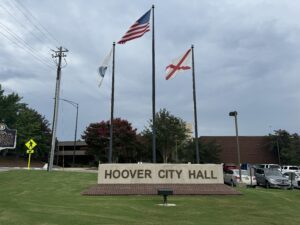Alabama’s higher education enrollment still below pre-pandemic peaks, says state commission

Jemma Stephenson, Alabama Reflector Enrollment in Alabama’s public institutions of higher education is recovering after a sharp decline during the COVID-19 outbreak but hasn’t returned to pre-pandemic levels, according to data released last week by the Alabama Commission on Higher Education. According to the preliminary numbers compiled by ACHE, two-year college enrollment in Alabama went from 45,967 in the fall of 2022 to 48,502 in the fall of 2023, a roughly 5.5% increase. At four-year colleges and universities, enrollment grew from 145,040 to 147,604, a roughly 1.8% increase. But outside some of the state’s flagship universities, the numbers are still down from their levels before the COVID outbreak. Overall enrollment in higher education in Alabama fell from 198,523 in the fall of 2019 to 196,106 this fall, a 1.2% decrease. In two-year colleges, enrollment fell from 50,474 in 2019 to 48,502 in 2023, a 3.9% decrease. At four-year colleges and universities, enrollment fell from 148,049 in 2019 to 147,604 in 2023, a 0.3% decrease. According to a report from the National Student Clearinghouse Research Center, undergraduate enrollment grew for the first time nationally since the beginning of the pandemic. Freshman enrollment declined. Jim Purcell, executive director of ACHE, cited several reasons for the slow recovery in an interview on Friday. One is an overall decline in high school students in Alabama, a decline Purcell said would last through 2030. Students historically returned to colleges and universities after economic downturns. Now, people have more options to enter the workforce. “What’s happened is with the influx of automation and different types of jobs, I think that some people are going into the workplace a lot earlier,” he said. Looking forward, Purcell said that they are looking towards attracting more adults back to school. “Yes, we want to have people to have the initial credentials to get a good job,” he said. “But we do believe that the promotion opportunities are really related on their ability to write well, speak well, and present themselves to a large swath of the world very positively and that sometimes the bachelor’s degree can help people get to that skill set.” Some schools last week challenged ACHE’s numbers, which attempt to reflect full-time student enrollment through a formula known as full-time equivalents (FTE). The schools cited their own enrollment figures, which include part-time students, saying they showed a more significant recovery from the pandemic. Aaron Thompson, an assistant vice president for advancement and branding for Alabama A&M, wrote in an email that the school had enrolled 6,633 students in the current semester, the highest in school history. ACHE said the school had seen a 16% decline since 2019. Purcell said that FTE may stay the same even as enrollment grows. FTE is a calculation based on total credit hours applied to an equivalent number of full-time students. Enrollment numbers are the raw number of students enrolled, which could include those taking a single class. Purcell said that full-time students are what helps institutions sustain themselves. Gains Six four-year universities – The University of Alabama, Auburn University, University of Alabama-Birmingham, University of North Alabama, Jacksonville State University, and the University of West Alabama – have exceeded their pre-pandemic numbers. According to ACHE’s FTE numbers, the University of Alabama’s enrollment grew from 32,982 in 2019 to 34,106 this year, a roughly 3.4% increase. Auburn’s enrollment went from 27,617 to 29,422, a roughly 6.5% increase. UAB’s enrollment went from 18,846 in fall of 2019 to 18,942 in the fall of 2023, a roughly 0.51% increase. UNA’s enrollment from 5,999 to 6,932, a roughly 15.6% increase. The University of West Alabama’s student body grew from 3,817 to 4,059, a roughly 6.4% increase. Jacksonville State University went from 7105 to 7711, an 8.5% increase. Alex House, spokesperson for the University of Alabama, said in an emailed statement that the university has “well-established and strategic recruiting efforts.” “Students choose The University of Alabama for the unmatched academic programs and competitive scholarships along with a vibrant campus culture,” she wrote. Purcell said that some smaller institutions, like the University of West Alabama, are focusing on online enrollment. “There is a question at some point, whether there’ll be a saturation point for that, whether there’ll be every institution will have enough off-campus, online stuff in other states that it will sort of begin to wane, and so that’s why it’s important for the institutions to keep an eye on what’s working, what’s not, what is really a benefit to the state,” he said. For schools that are increasing student enrollment, Purcell said that he has some concerns about schools enrolling single-course students, which he said doesn’t generate sustainability or efficiency for the institutions. “We’ve just got to make sure that we’re getting people who are coming to that institution and are going to sustain, retain, and be a part of the institution for several years to to generate enough to make it financially viable,” he said. Who struggled According to ACHE’s FTE numbers, the four-year colleges and universities still affected by the pandemic include University of Alabama in Huntsville, whose enrollment fell from 8,217 to 6,991, a roughly 14.92% decrease. Alabama A&M has fallen from 6,692 to 5,614, a roughly 16.1% decrease. Alabama State University went from 4,149 to 3,867. Troy University went from 11,539 to 9,881, a roughly 14.37% decrease. The University of Montevallo went from 2,224 to 2,194, a roughly 1.35% decrease. University of South Alabama went from 12,960 to 12,482, a roughly 3.69% decrease. AUM went from 4,031 to 3,555, a decrease of 11.8%. Lance Crawford, a spokesman for the University of South Alabama, provided a September news release that said the school had grown in enrollment and retention. Matt Clover, spokesman for Troy, wrote in an email that net enrollment was only down 1% this year and was up over last year in several years. Clover said that enrollment was up for online students, international students, and new starts. “Like many institutions, Troy University has faced enrollment challenges in the aftermath
Steve Flowers: Jo Bonner inaugurated as president of University of South Alabama

Jo Bonner was officially sworn in as the fourth president of the University of South Alabama on September 23, 2022. The University of South Alabama is the crown jewel and flagship of the Alabama Gulf Coast. It is a sprawling, manicured, beautiful, and functional modern campus. It is currently the third-largest university in the state. Under the leadership of President Jo Bonner, it will grow and prosper to where within the next decade, it will be thought of as one of our premier “Big Three” major flagship universities along with the University of Alabama and Auburn University. Its location as the only major university in the populous metropolitan Mobile/Baldwin growth area of our state, coupled with having the University of South Alabama Medical School and Center on the campus, portends for exponential growth and prosperity for the University of South Alabama. The prosperity of USA is assured by the selection of Josiah R. Bonner, Jr. as President. Over the next decade, he will be thought of in the same terms and same breath as the legendary founding President of USA, Frederick Whiddon, who oversaw the first 35 years of USA. There has never been a more perfect selection to be the leader of a major university in our state than the appointment of Jo Bonner as President of USA. His knowledge of the business, civic, and social community of the Mobile/Baldwin area is unique. Through his decade of service as their congressman, he is an integral part of the Mobile community. He left Congress with the highest regard and admiration. He was so well respected by his congressional colleagues that he was Chairman of the U.S. House Ethics Committee. You can be assured that there is no university president, lobbyist, or board of trustee member who can walk the halls of Congress and bring home the bacon from the limitless federal trough than Josiah Bonner, Jr. You can also rest assured that there is no university president in the state that has the clout and reverence on Goat Hill in Montgomery than Josiah Bonner, Jr. This is a very unique and perfect blend for prosperity and growth for USA. It is well known in political circles that Jo Bonner is Governor Kay Ivey’s closest confidante. He served as her Chief of Staff for four years. Their families go back as friends and relatives in Wilcox County for generations. Jo Bonner’s father, the first Josiah Bonner, was Probate Judge of Wilcox County. Jo is the baby of the family, a good 15 years younger than his brother, Jim, who grew up as friends and in school together with Governor Kay Ivey. Jo’s sister, Judy, and Senator Jeff Sessions were in school together in grades K-12, then Jo came much later. The aforementioned sister, Judy Bonner, was President of the University of Alabama. Never before in Alabama’s history has there been two siblings being presidents of major universities in Alabama. Jo Bonner actually became President of USA in January. The official inaugural event was on September 23. It was a magnificent program. Governor Ivey gave the keynote address. She beamed with pride as she talked about her “little brother” from Wilcox County. Dr. Jack Hawkins, the 30-year Chancellor of the Troy University System, gave a brilliant address. He spoke for all of the university presidents in the state as the Dean of University Presidents. Jo Bonner’s family was recognized, beginning with his sister, President Judy Bonner. His wife, Janee, along with his two outstanding children, son Robin, and daughter Lee, were in attendance. The Inaugural Event was held in the magnificent Mitchell Center. The Mitchell family has been a major benefactor to USA. Mrs. Arlene Mitchell is Chairman of the Board of Trustees. Another Board of Trustees member is Dr. Steve Stokes, a radiology oncologist from Dothan. He and his wife Angela have been generous donors to USA, also. Stokes Hall is the newest dorm on campus. It was truly fitting that Jo Bonner had a throng of political dignitaries attend his Inaugural Event. It was like a political gathering of Who’s Who in Alabama politics visiting on the floor of the Mitchell Center prior to Jo’s inauguration. The list of attendees is too long to enumerate. However, in addition to Governor Ivey was Mac McCutchen, John McMillan, John Merrill, Bobby Singleton, Vivian Figures, Young Boozer, Bill Poole, Twinkle Cavanaugh, Sandy Stimpson, Will and Liz Filmore, Cathy Randall, Gordon and Ellen Stone, Jim Purcell, Victor Gaston, Chip Brown, Margie Wilcox, Alan Baker, and Judge Sarah Stewart, just to name a few. They were all there to honor a man who is revered and respected in Alabama – Josiah “Jo” Bonner. Steve Flowers is Alabama’s leading political columnist. His weekly column is read in over 60 Alabama newspapers. Steve served 16 years in the state legislature. Steve may be reached at www.steveflowers.us.

